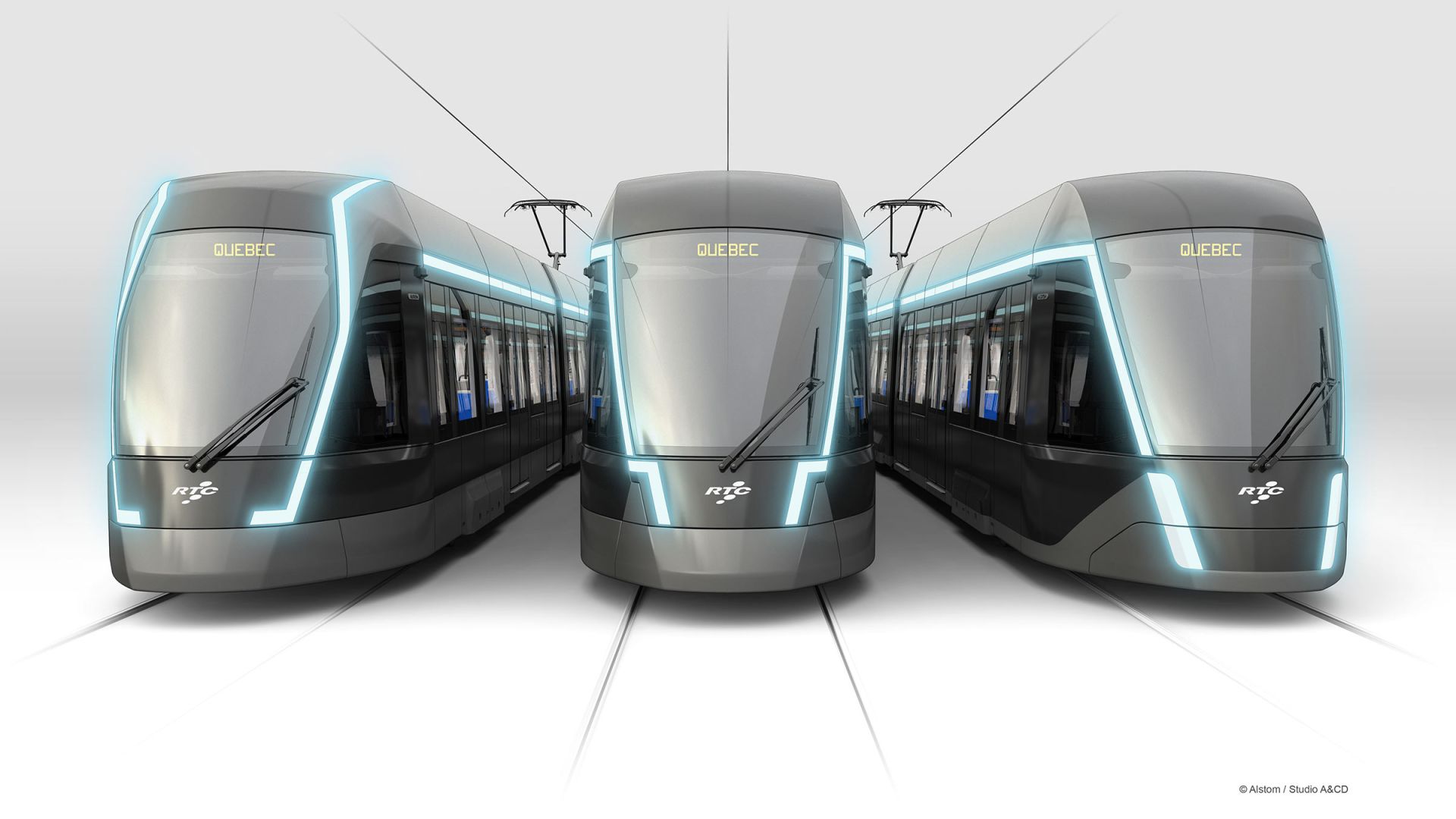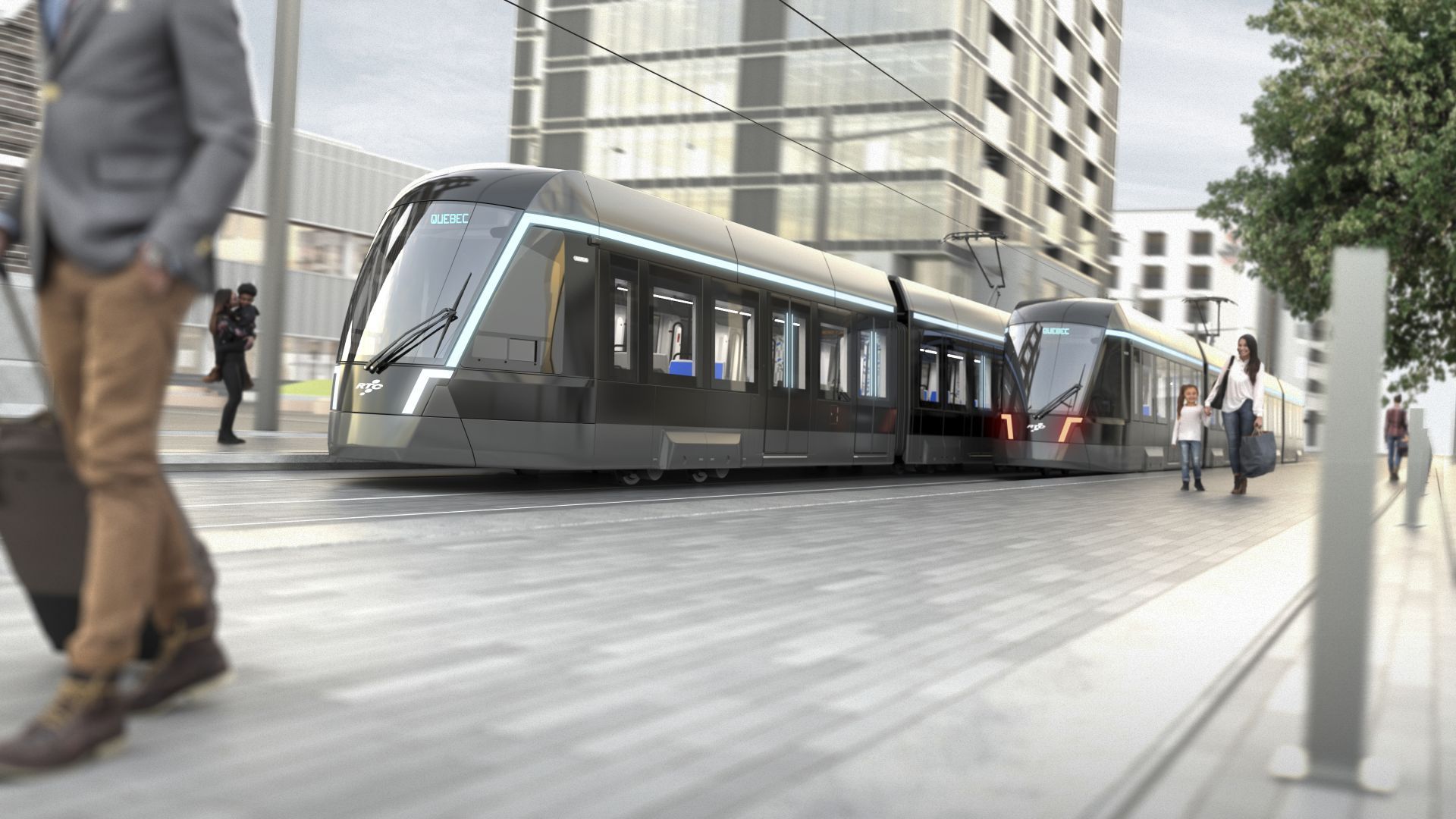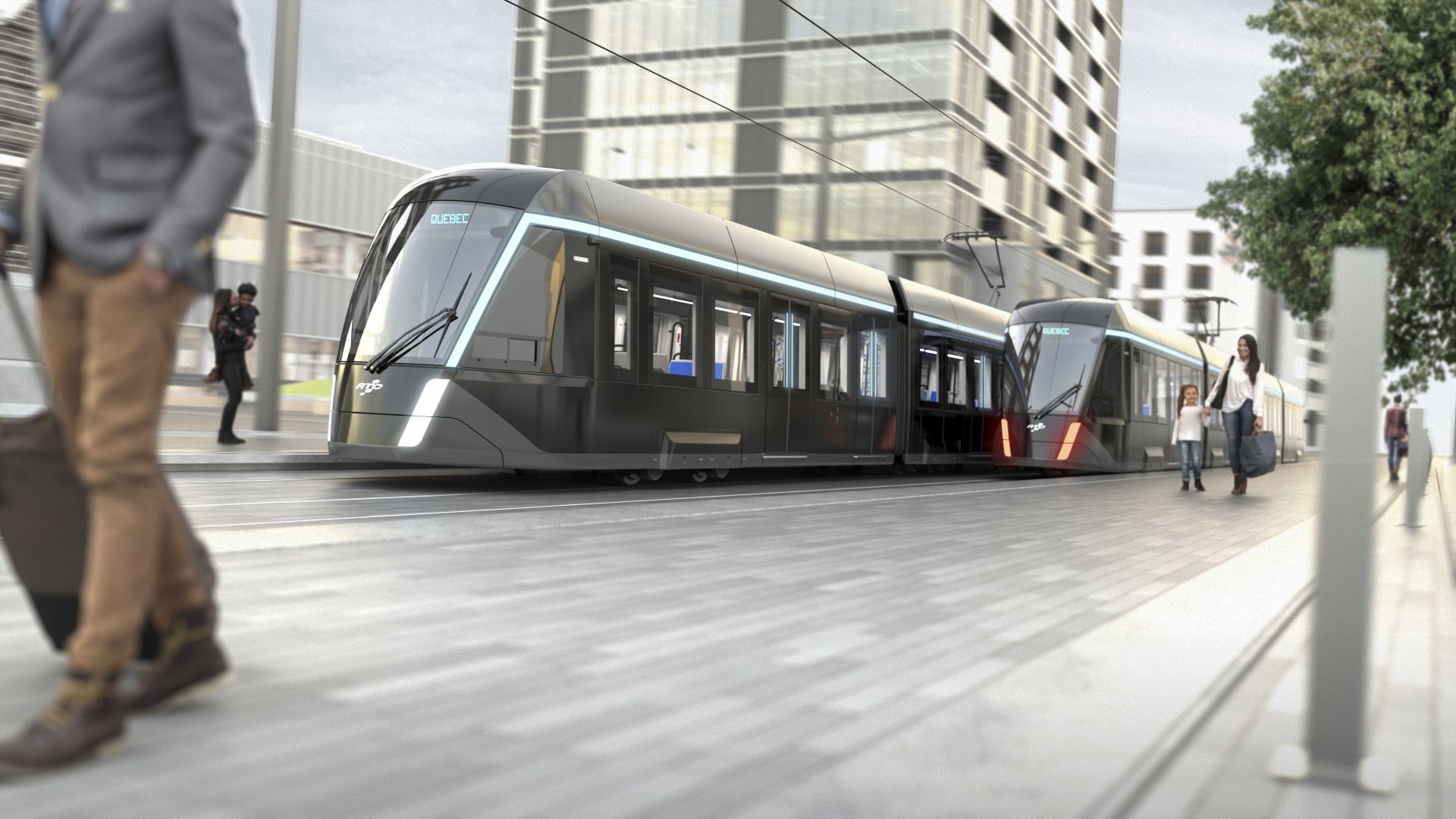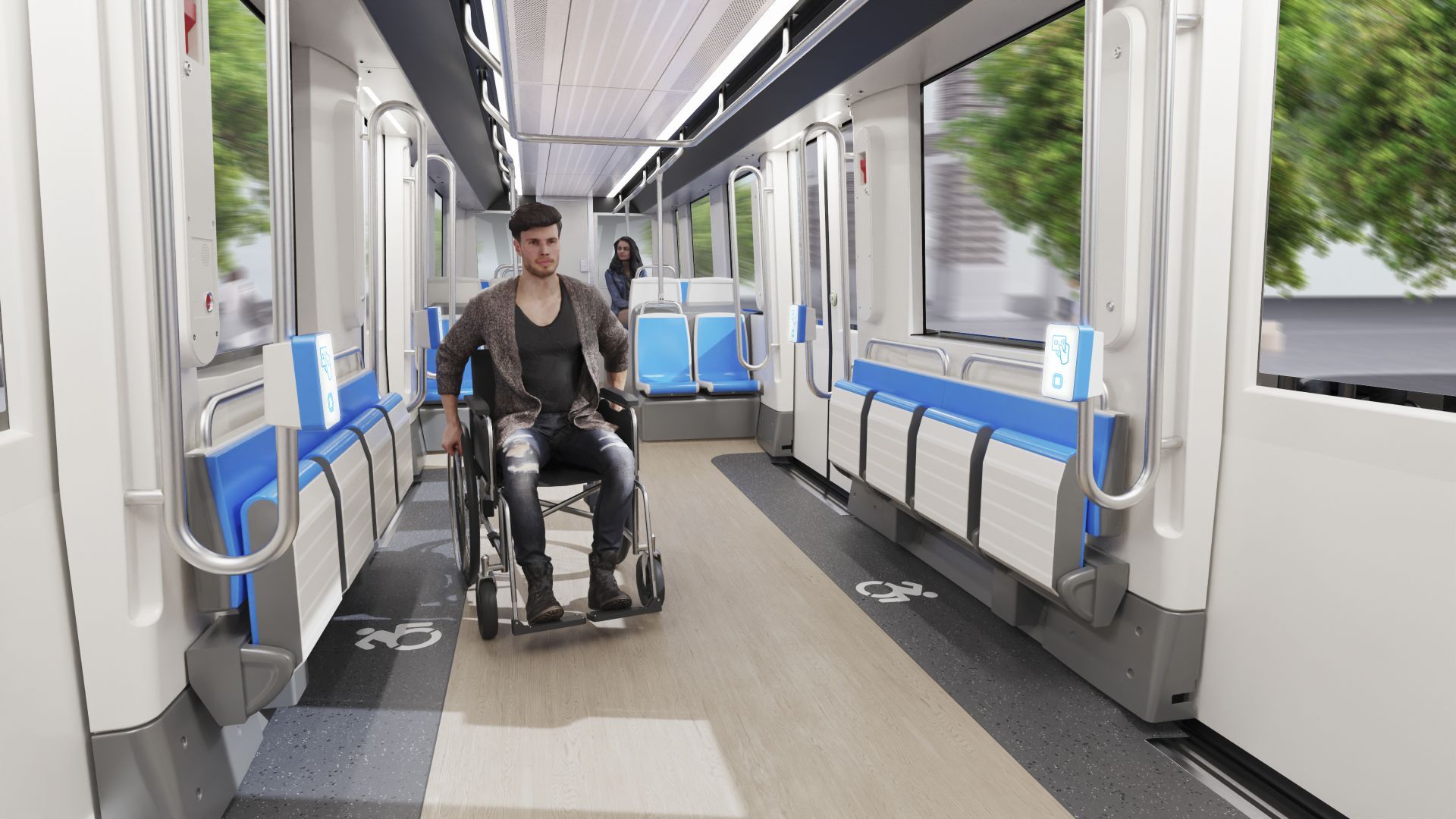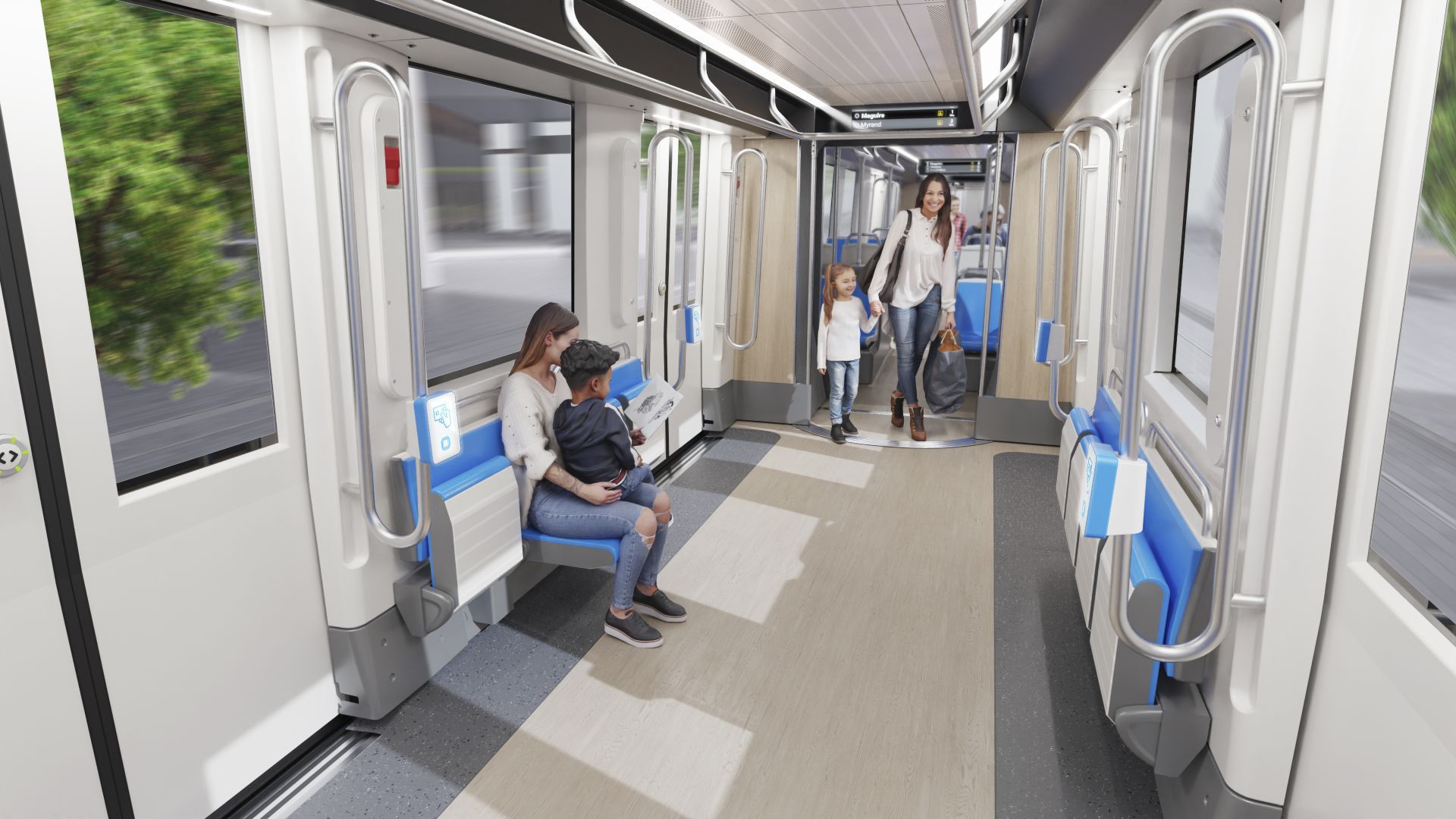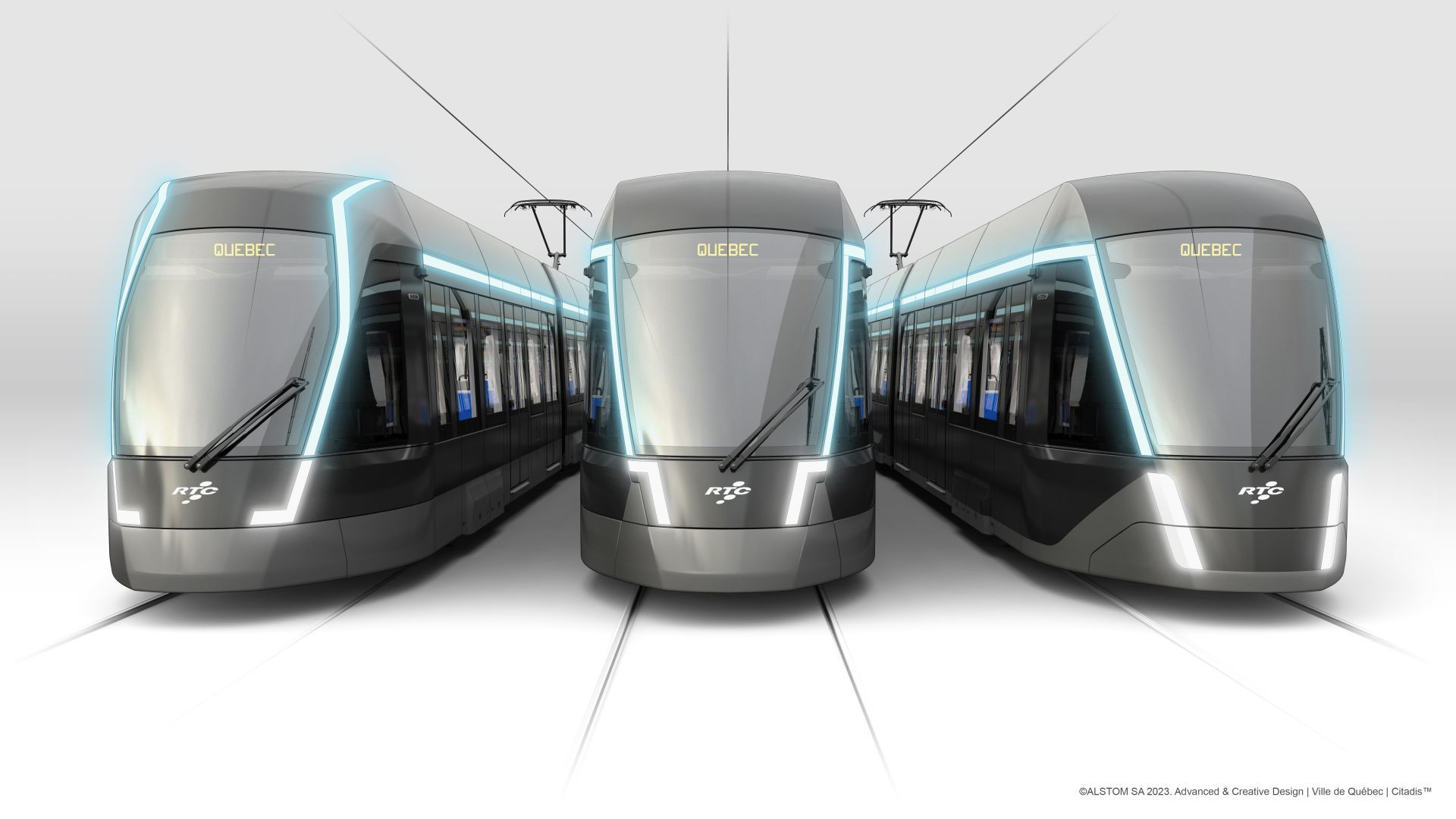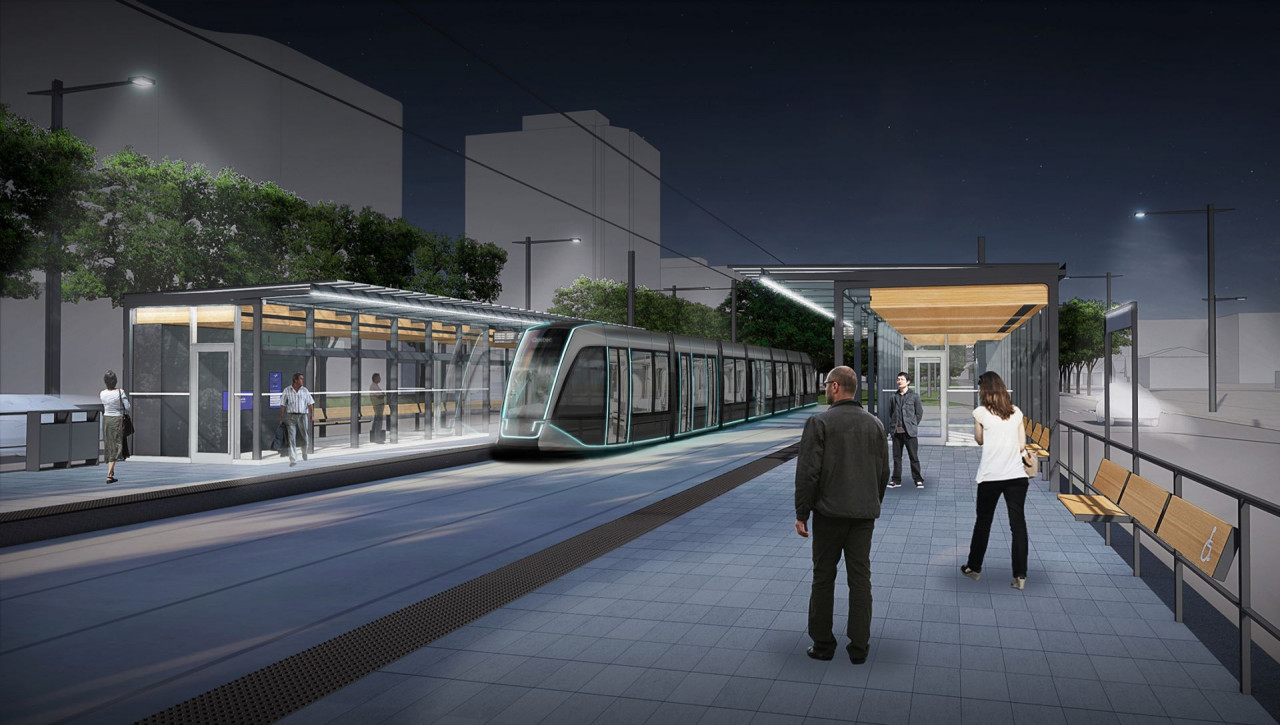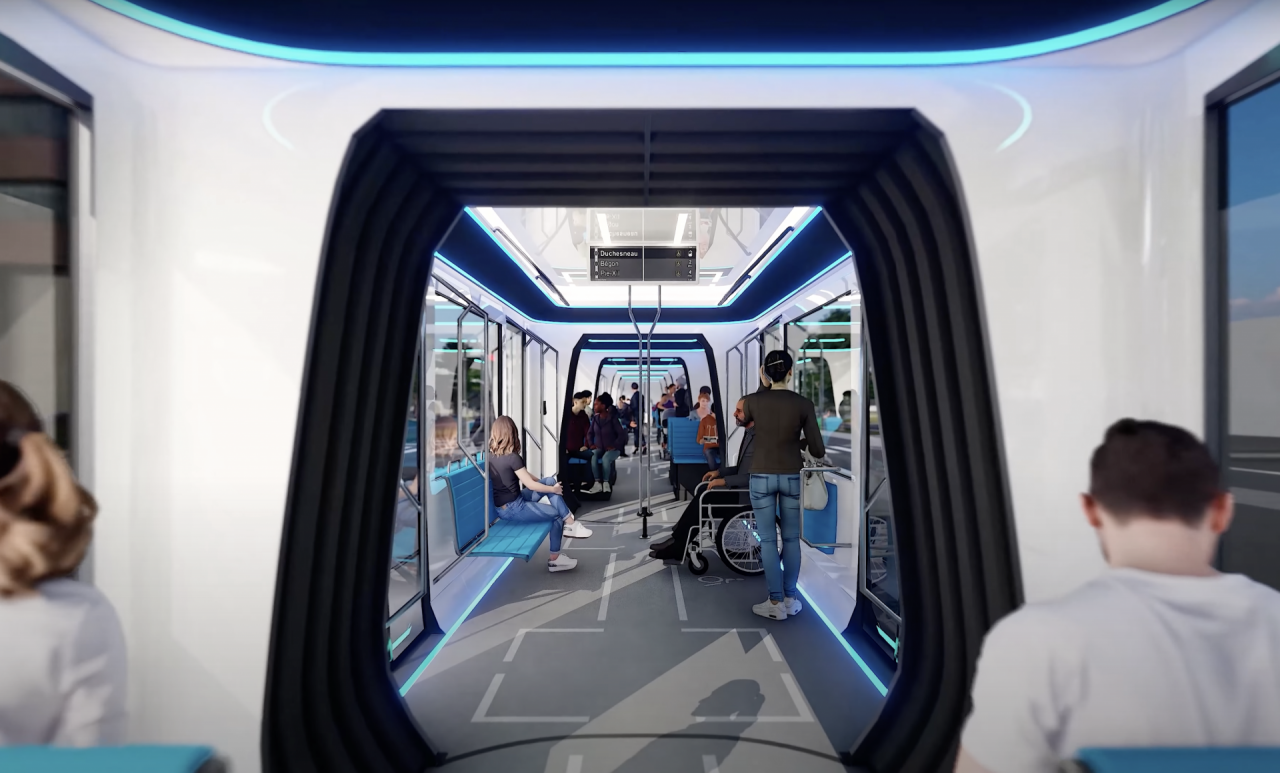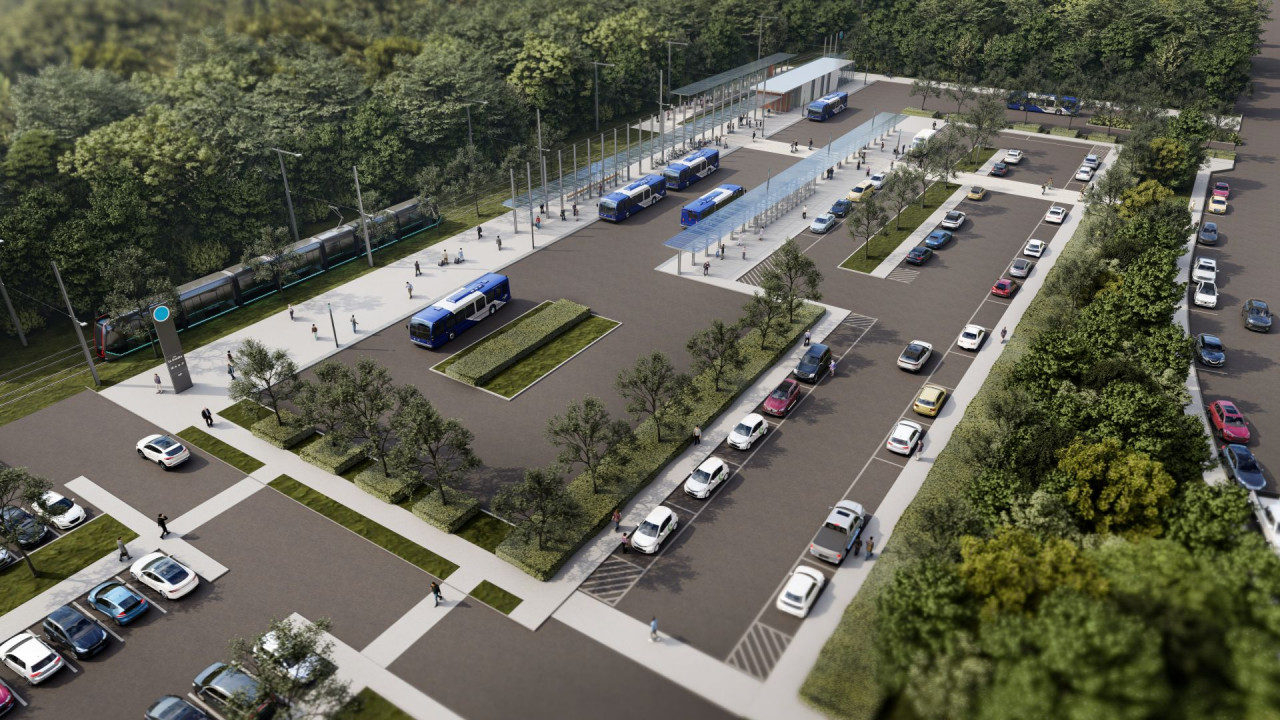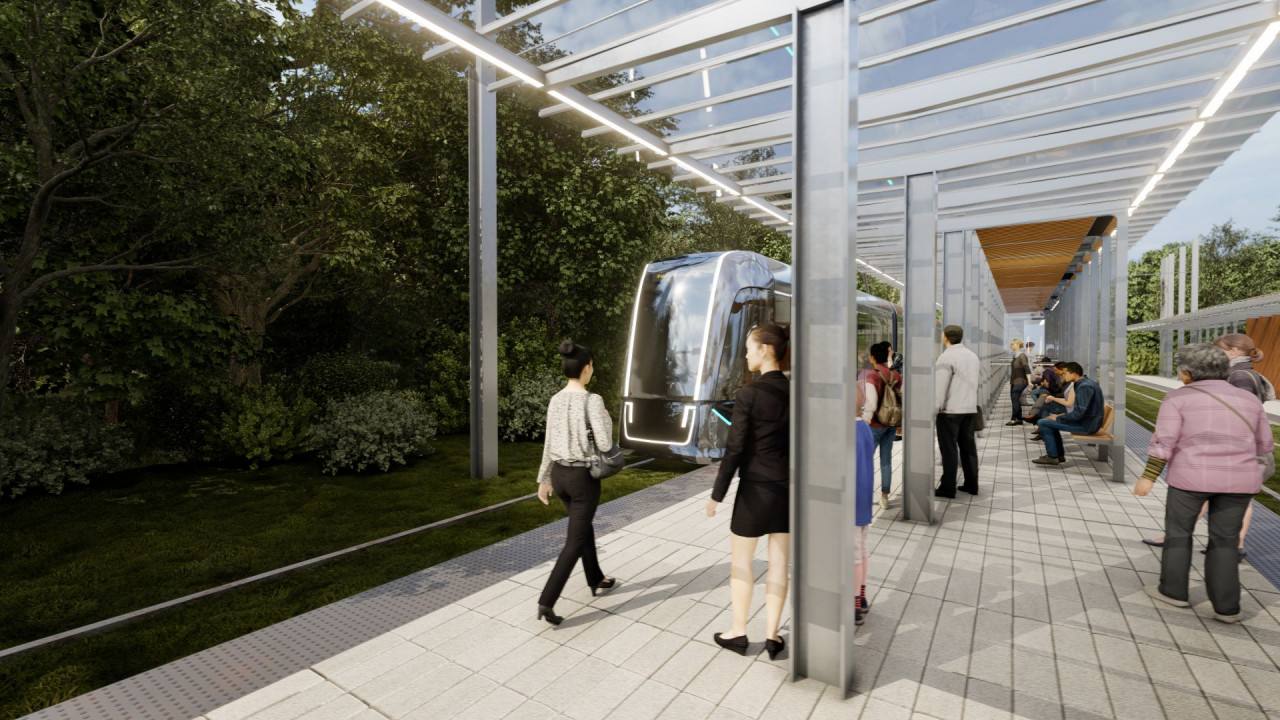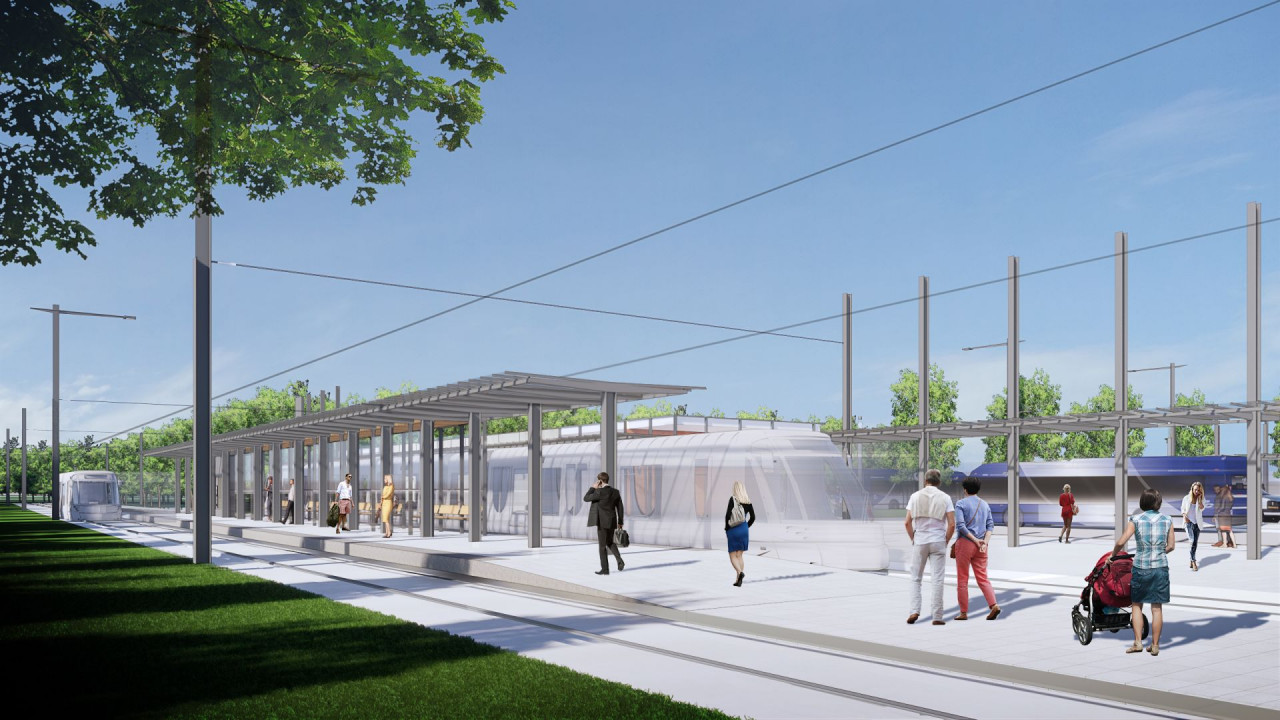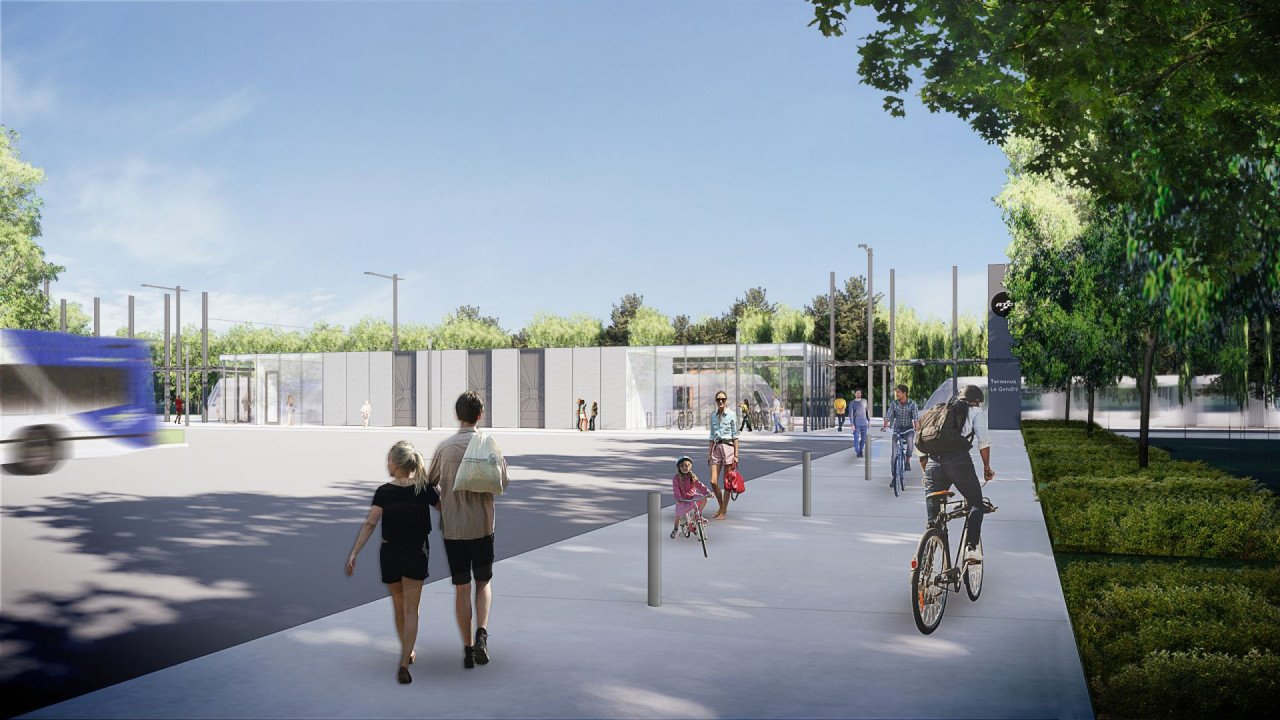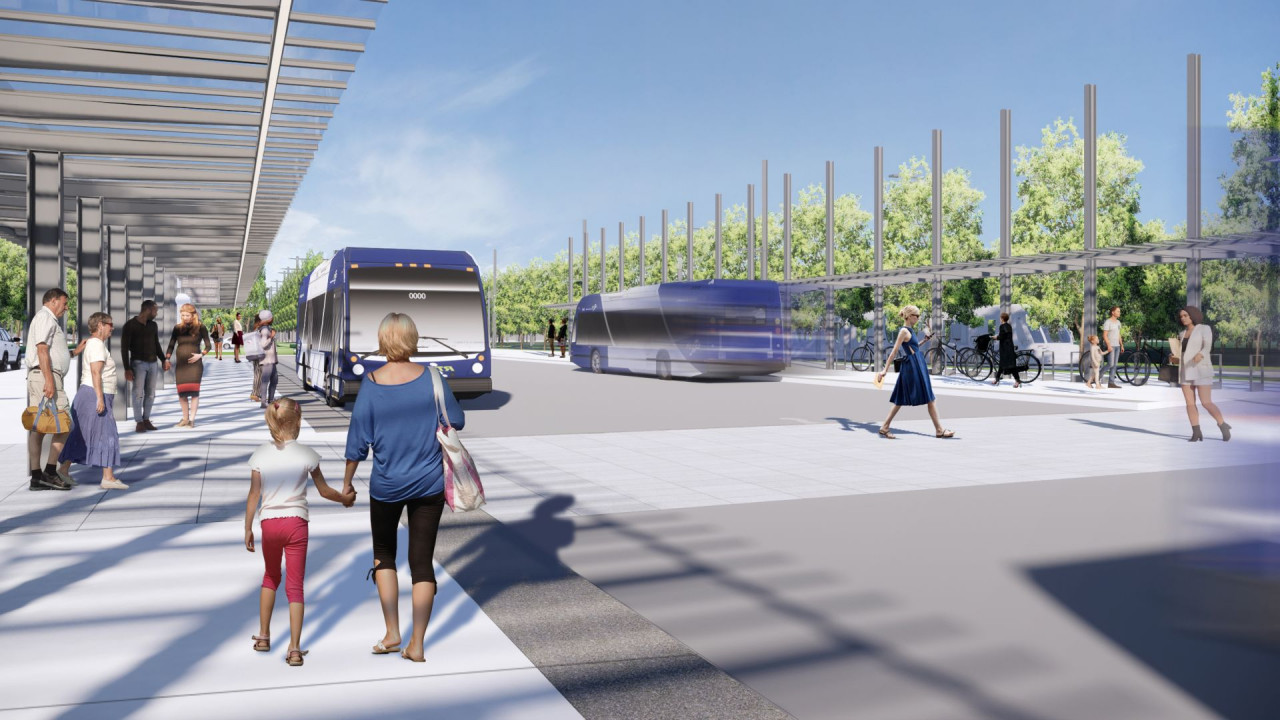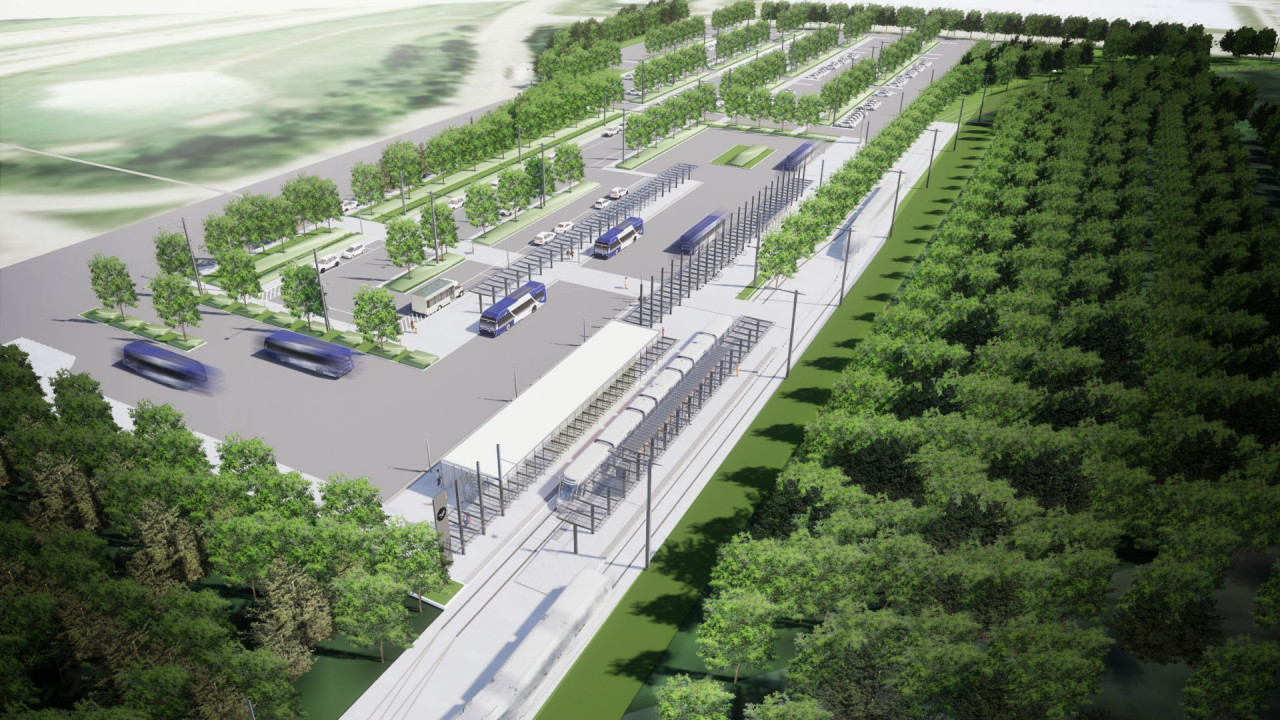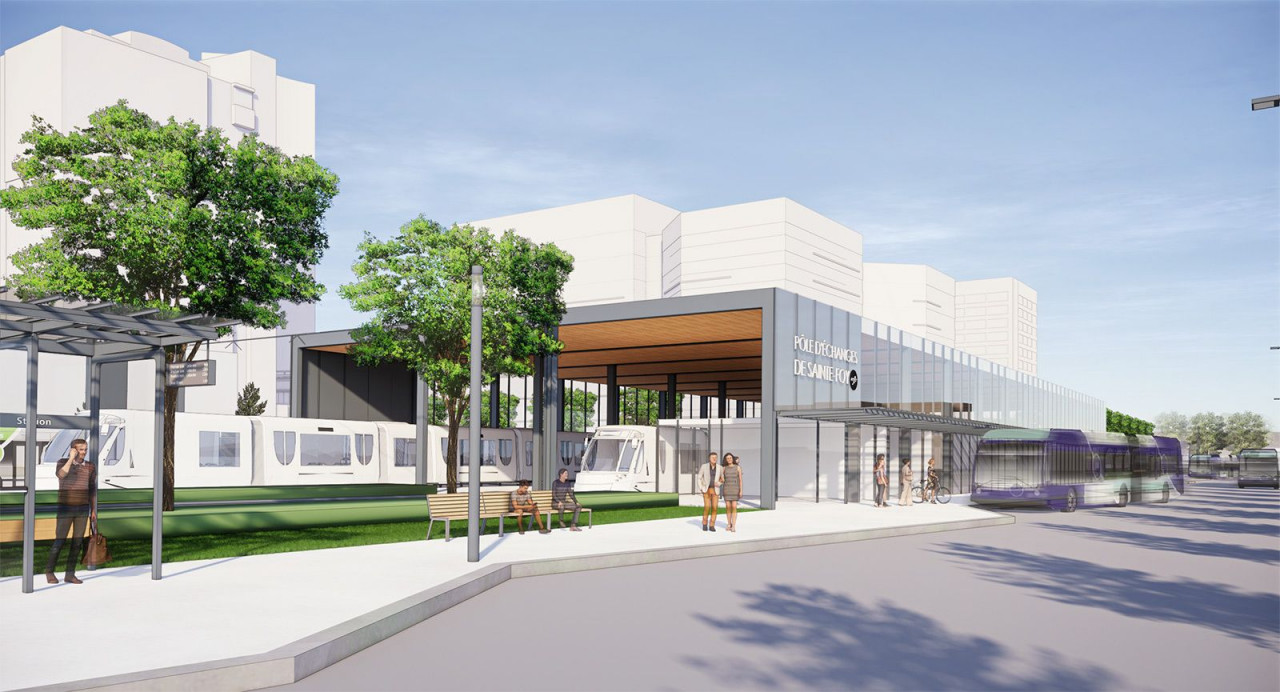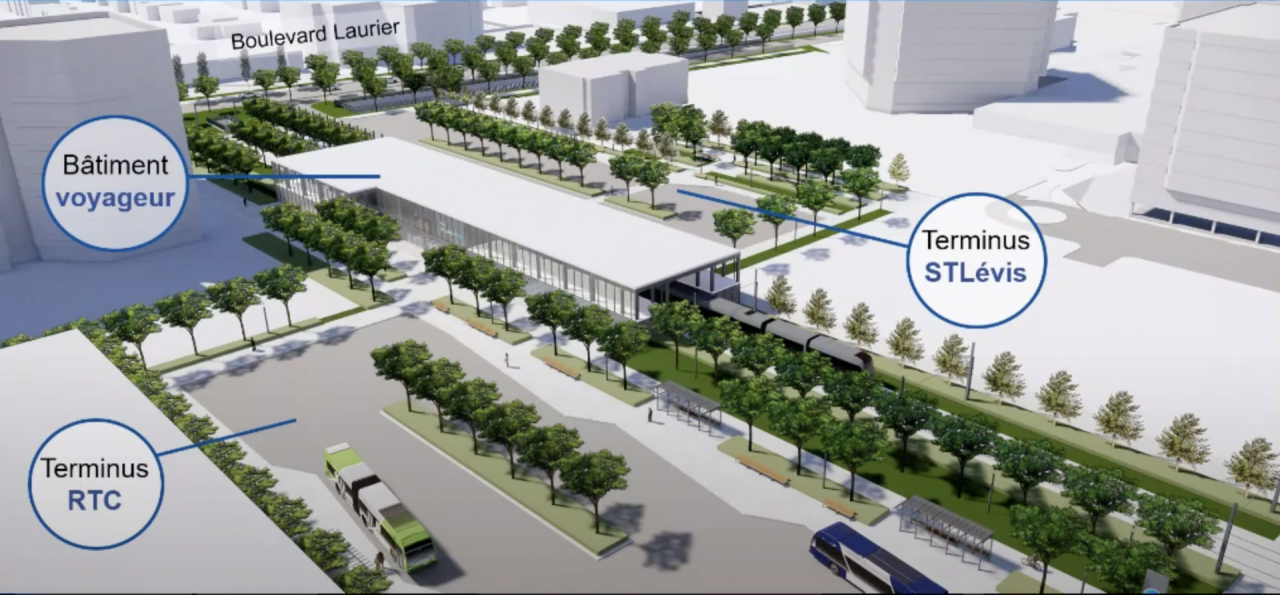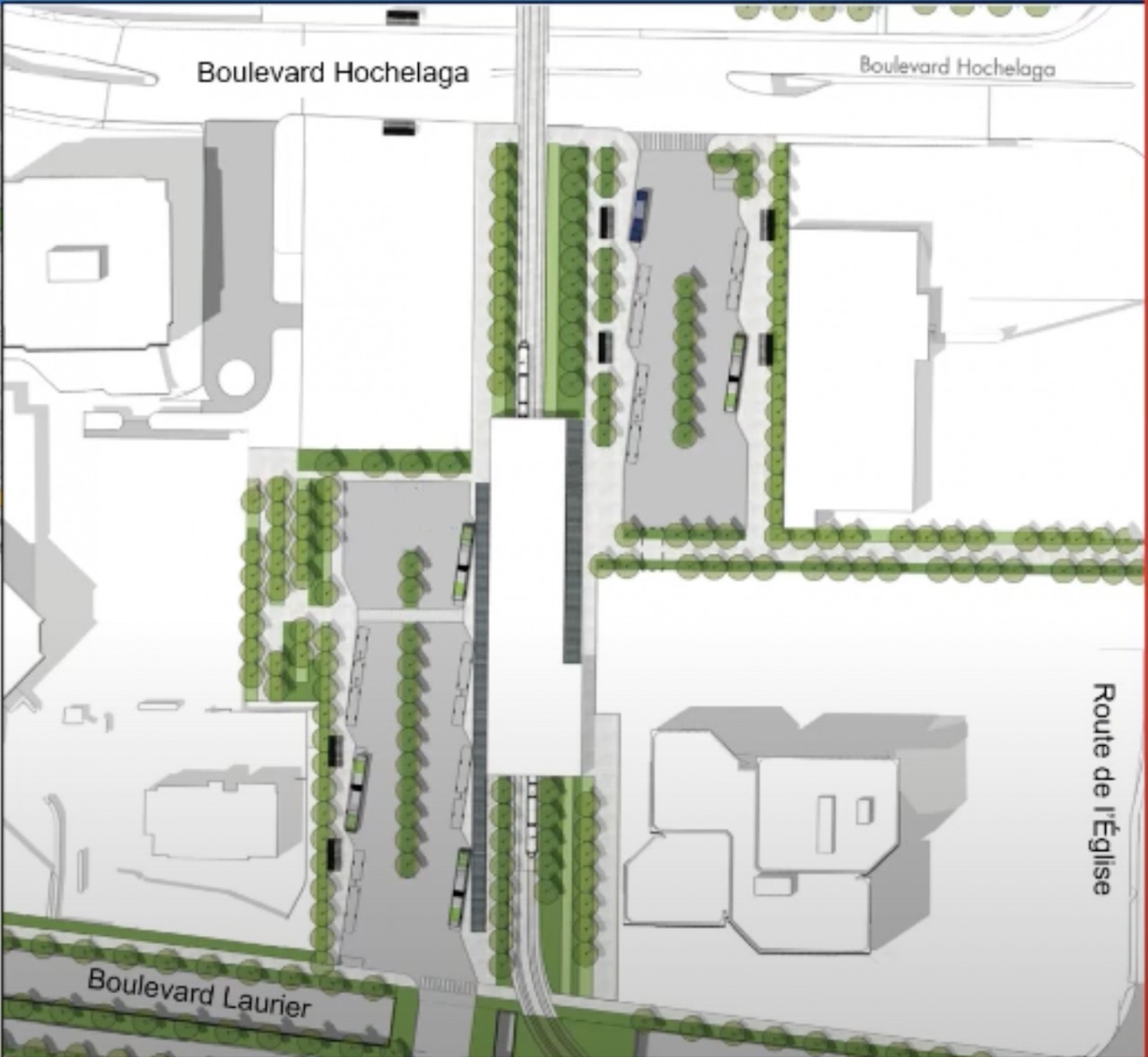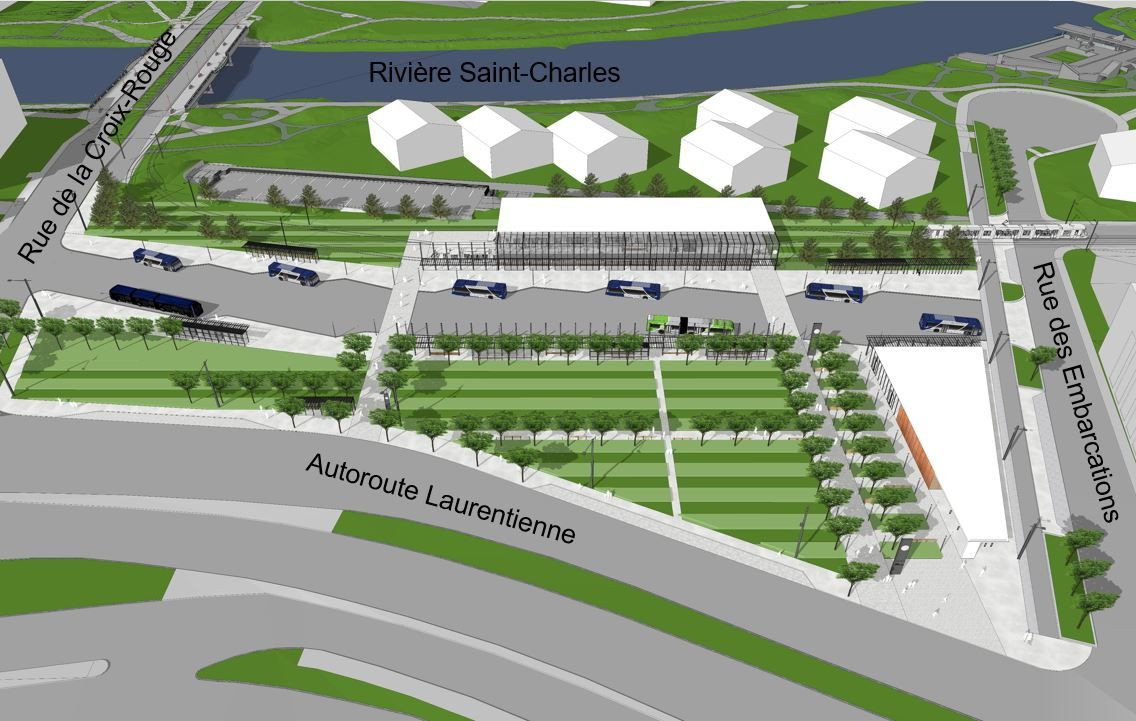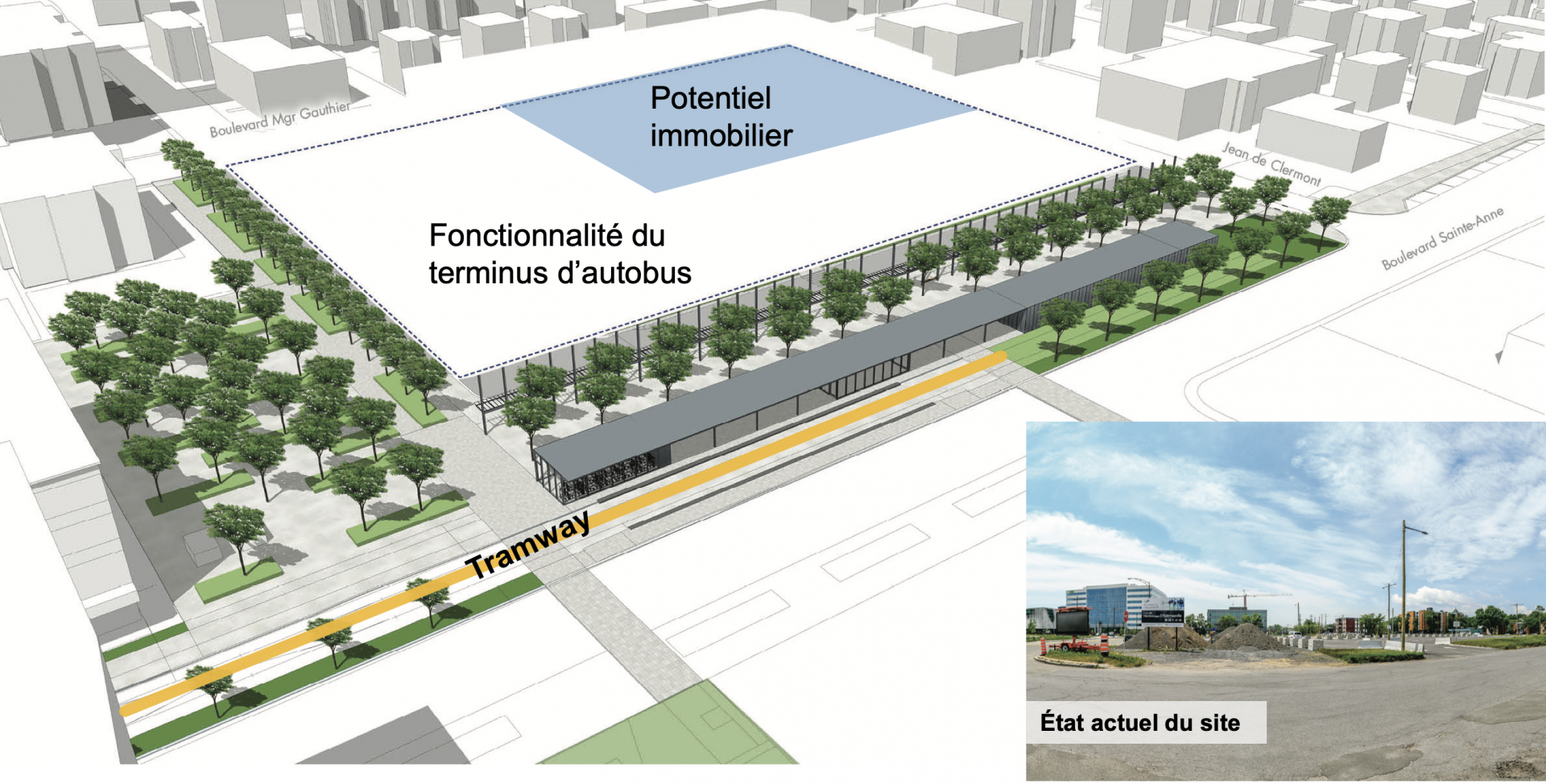Acting as the main interaction point between bus routes and the tramway, transfer hubs will play a significant role in integrating the tramway to the existing network throughout the city. They are built to encourage active transportation and offer a safe and comfortable waiting area for passengers.
As part of its tramway line, the city will have 5 transfer hubs throughout the city. It is expected that upwards of 20,000 daily users will navigate through those hubs, with their design prioritizing seamless and comfortable transfer between various services.
Pôle Le Gendre
Le Gendre will serve as the western terminus of the line, and will be a new addition to Quebec's transit network. Located across from the existing Parc-O-Bus (232 places), it will serve the existing communities on the west-end of the City, Saint-Augustin, L'Ancienne Lorette through various bus routes, Flexibus service, bicycle parking and an additional 500 parking spots for commuters that desire to use public transit to complete their commute into town.
The layout, while not final, will include a dedicated sheltered and heated waiting area for the tramway, with a customer service and fare purchase area. On the other side, bus platforms will offer access to the numerous routes circulating in the surrounding neighbourhoods.
To encourage and promote an active lifestyle, new pedestrian and bike-friendly connections will be made in the area. Of particular interest, Le Gendre will be central in the new transit oriented development (TOD) area which will be built upon the neighbouring lands. Le Gendre will also be located right next to the maintenance and storage facility, which will be located further south on Rue Mendel.
Pôle de Sainte-Foy
Sainte-Foy will serve as the main connection point between the STLévis routes serving the South Shore, tramway and RTC buses. While the hub will be a new addition to the area, it will stop many buses from continuing further on Laurier, where the tramway will be circulating in the median on a dedicated right of way, which will enable better connections for all users. Located in the area between Canadian Tire and Iberville III and IV, the new transfer hub will replace various parking lots and will be a dedicated area to transit users. Originally, the hub was expected to be integrated in Le Phare project, using an underground platform and leading into a second tunnel, which has since been cancelled, leading to the hub being located at surface level at a different location.
Since the first presentation of the hub, the layout has continued to evolved to improve and ease transfers, while also reducing conflict points between the tramway, buses, automobiles and pedestrians. The main building which will host the tramway platform will be oriented North-South, with a bus loop on either side. To the west, the STLévis loop which will integrate commuters from the South Shore, which will connect to Laurier using a dedicated overpass and ramp. To the East, the RTC loop which will accommodate the various local routes and express services, which connects to Hochelaga with a new protected intersection. Given the high volume of traffic seen on Laurier, an overpass will be built to allow the tramway to circulate without an additional intersection, while adding a safer option for pedestrians. Westbound drivers will pass under the tramway and ramps to the STLévis bus loop as traffic flow towards the bridges will remain an important consideration.
As with other hubs, Sainte-Foy will be a heated and fully-enclosed station that will offer bike parking and lead to a revitalization of the area with new trees and plants. This should help in reducing the urban heat island often observed in the area due to the large paved area.
The construction of this new hub, alongside with the renewal of Hochelaga and Laurier will lead to one of the most important renewal for the area in almost 50 years, allowing for improved connections and accessibility for pedestrians and cyclists in a part of town historically dominated by automobiles.
Pôle de l'Université Laval
At this time, not much is known about the exact design of the Université Laval transfer hub. It will be located further west on campus across from the Agathe-Lacerte pavillon. Based on the two renderings that are available, the bus stops area will be further north on Rue de la Médecine, in front of the Adrien-Pouliot pavillon.
Unlike other hubs and due to the particular layout due to existing structures, it is not expected to be a single enclosed structure. However, shelters are expected to be heated and built to allow for comfortable transfers.
As more information become available, this page will be updated.
Pôle de Saint-Roch
Located right next to the current Rue de la Pointe-aux-Lièvres, the Saint-Roch hub will act as the connection point for buses serving the lower-town, Charlesbourg, Limoilou and other neighbourhoods connected through the various bus routes in the area. For many commuters that work in the Parliamentary District or historic area, it will be their main connection point. It is expected that the hub will allow for the densification and redevelopment of neighbouring lands.
The area has in recent years seen massive increases in active transportation, making it an ideal area to integrate the tramway and other services. This is done by the construction of dedicated structures for the tramway and buses which will offer a comfortable waiting area and shelter as people transfer to their destination. For bus routes connecting, a new bus loop parallel to the tramway will be built to enable quick transfers and reduce walking time. This will be complimented by a public plaza and linear park of the Saint-Charles river.
As part of its construction, various properties were acquired and will be replaced with the hub. To mitigate noise, various considerations have been implemented to reduce impact on neighboring properties, including a curtain wall, use of material and design of the shelters themselves.
Pôle d'Estimauville
Initially supposed to be a hub connecting local buses to the new trambus line, the change in alignment for the tramway resulted in a reconfiguration and redesign of the hub to suit the needs of a tramway. It will serve users arriving from Beauport and further East and will be the eastern terminus for the Tramway.
Once constructed, it will replace the current Terminus Beauport as it will integrate all bus routes and tramway in a single location. The hub will be built at a different location that is currently occupied by the Parc-O-Bus d'Estimauville. The bus loop will be on the northern side of the property, while the tramway stop will be closer to the current alignment of the Boulevard Sainte-Anne.
As part of its construction, the area will also see additional developments to integrate with the area. At this time, a lot of details are not known about the hub as it remains in design, however, it is expected that it will offer heated and sheltered waiting areas for all users, in addition to other relevant services. The station building should have dedicated bicycle storage, relevant services and offer similar comfort and features as seen in other major hubs of the network.
The construction of the hub will also be a key element in the continued renewal of the area and implementation of the urbanism policies that have been developed for it. Details remain limited for the time-being, however this page will be updated as more information becomes available.
